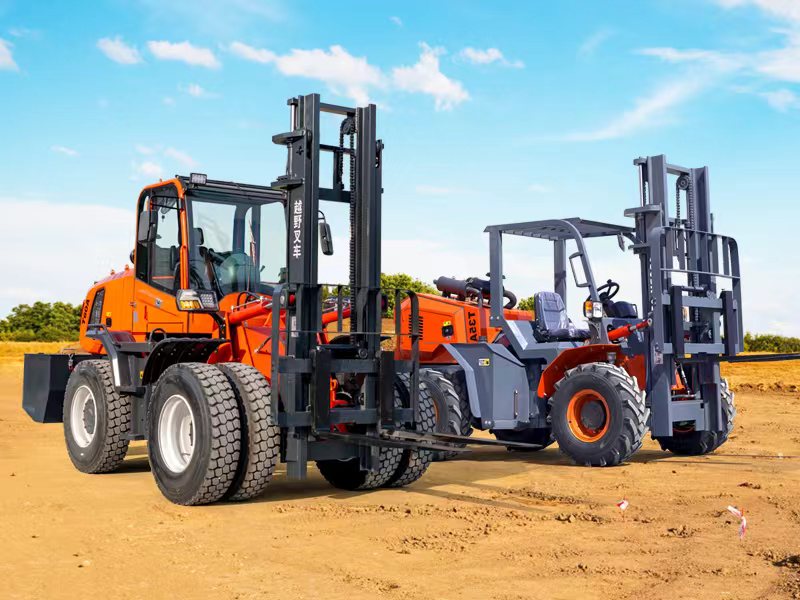Choosing A Forklift That Suits You Is Not That Difficult
May 15, 2024
1. Operating environment: Consider the environment in which the forklift will be used, such as indoor or outdoor, ground material, space size, etc., which determines the type and size of the forklift.
If your working environment is on dirt roads or mountainous areas with wide and complex terrain, then an off-road forklift is perfect.

2. Cargo Characteristics: Understand the weight, volume, shape and stacking height of your cargo to determine the load capacity and lifting height of your forklift.
3. Frequency of operation: Forklifts that are used frequently require greater reliability and lower maintenance requirements.
4. Energy type: Choose an electric or internal combustion engine-driven forklift according to the working environment. For example, indoors or places with high environmental requirements may be more suitable for electric forklifts.
5. Safety: Forklifts must meet safety standards and have necessary safety features such as good visibility, safety warning devices and emergency stop buttons.
6. Operational convenience: The operational simplicity of a forklift directly affects operating efficiency and operator comfort.
7. Maintenance cost: Consider the maintenance cost of the forklift, including maintenance cycle, frequency of parts replacement and cost.
8. Brand reputation: Choosing a well-known brand with good service can reduce the trouble of later service.
9. After-sales service: Good after-sales service can quickly solve problems with the forklift.

10. Cost-benefit analysis: Evaluate the purchase cost of a forklift versus the long-term operating costs, as well as the expected return on investment.
11. Regulatory Compliance: Ensure your forklifts comply with local laws, regulations and safety standards.
12. Training and operator qualifications: Ensure operators receive appropriate training and hold valid operating certificates.
13. Scalability and versatility: Consider whether the forklift can be equipped with a variety of attachments to adapt to different operating needs.
14. Environmental considerations: Consider the forklift’s environmental features, such as noise levels and emission standards, especially when operating in sensitive areas.
These factors are important because they are directly related to the performance, safety, operating costs and total cost of ownership (TCO) of the forklift. The right choice can improve operational efficiency, reduce long-term costs,
and ensure operational safety.
In this way, do you have a new idea?
If you have any other questions, please leave a message for consultation. I also hope that you can successfully purchase a forklift of your own as soon as possible.
